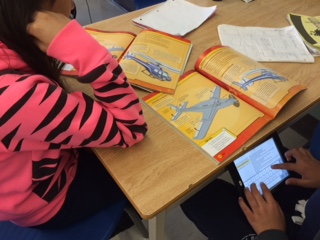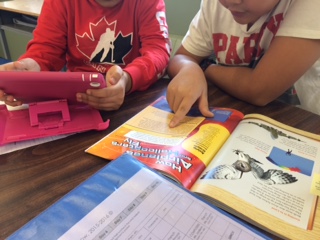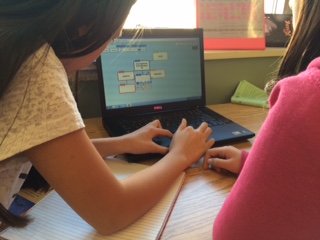And then there is the concern with classroom management: How do you deal with a class full of students surfing the 'net when you your own school schema stems from a time before the Internet even existed?!
Well Planned is Well Managed
I myself have been learning again the value of a well-planned lessons. As I wrestle with the logistics of addressing curriculum while developing digital literacy in a classroom with wildly diverse learning needs and emotional profiles, and too few devices, I recognize that I don't always take the time anymore to think through each step of a lesson.
Because I myself am still learning many of the apps and software tools, I often find myself losing control of classroom management as a result in the learning mess, yes, even after nearly two decades of classroom teaching and workshop facilitation on classroom management!!!
Step-by-Step Helps the Lesson Flow Smoothly
So, last night I decided to work late and spent my time meticulously preparing a single lesson that would take the whole morning. I spent nearly three hours* putting together a two-hour "Science" lesson (we've just started Flight) that integrated Reading, Science, Social Skills/Learning Skills and Media Literacy.
I had been wanting to use mind mapping with students both as an organizational, note-taking tool when they were conducting research, as well as a visual opportunity to present learning at the end of a unit. One problem I'd been noticing, however, was that few students had actually experimented with digital options for mind mapping, and many hadn't even used mind maps at all, even in hard copy, and were struggling with effectively recording notes on paper as they read an informational text.
I had my work cut out for me!
I put together a "gradual release", full morning lesson with clear scripting about what I was going to do and say to students at each step along the way, and how they were going to distribute and share materials, as well as how they were going to turn in their work.
First, Learning Goals, Then, Explicit Teaching
After a quick review of our unit goals, we zeroed in on two that would become the focus of this lesson, as I told students that we would be reading a non-fiction text to find out more about how flight works. I noted that we would specifically be observing how headings and subheadings were used in the text to organize ideas and facts, and that we would use these headings to present the information graphically.
Modeled, then Guided Practice
I showed them a sample mind mapping software online (Popplet) and demonstrated a quick paper-to-digital sample, using the mind map we had just created. I then invited them to play around with the software, or to use another option, such as coggle.it, mindmeister or Ideament.
Students worked alone or with a partner to turn their Flight Mind Map from Paper to Digital versions.

We posted our list, and then I sent the class off for a quick drink/washroom break. After all, it had been a long, intensive morning, it was only half over!
When they returned, students set off around the classroom to read another selection about Flight (this time on how Airplanes and Helicopters Fly), and create a new digital mind map to organize their notes as they read.
Their final product was to be posted ("turned in") on Edmodo.
I had scripted every single step of the lesson, and was now able to enjoy the fruits of my labours: Students were fully engaged in the lesson, reading to and discussing the material with one another. Most were sharing resources respectfully, some were even policing each other ("Hey! Pay attention, turn your head here!" demanded one student of his partner!)
Several students were checking the success criteria list to discern what would make their work better before submitting it, and for those who forgot, I was still able to direct them to the chart we had posted when they came to me to ask the inevitable, "Is this good, Ms. Teschow?"
Criteria + Digital Tech = Success
The results were stupendous: Even students who struggled with reading at Grade level were able to make smart choices about who to work with, and were able to create a good-looking product, which significantly boosted their confidence. It was quite amazing to behold.
At the end of the morning, I dismissed students by calling out names of those who had submitted through Edmodo, and was thus able to keep behind those who needed a little extra support.
Reflection on Integration
At the end of the day, I can look back on my lesson and rejoice that students have not only "covered the content" of our reading lesson on Flight this morning, but that they have also been introduced to a new organizational tool/process (mind mapping), and are developing good collaborative and problem solving skills. AND, I can use my copiously-planned lesson as a model for future, similar lessons!
*I know, I know, you're all saying, "But I don't HAVE three hours to plan a single lesson!" But remember, it's just a few times you do this copious planning, until you get the hang of the "new" way, then it comes a little more naturally, and you can return to quick scribbles in the day book, lol!





 RSS Feed
RSS Feed